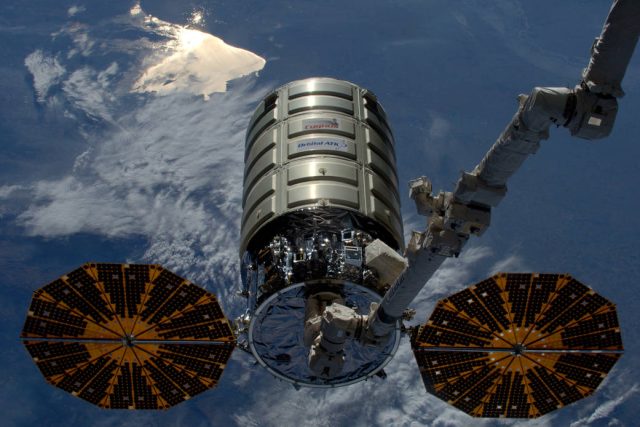
One of the greatest hazards in spaceflight is a fire inside a spacecraft filled with oxygen. So the experiments that NASA has conducted with fire in microgravity have historically been small and very well-controlled.
But with its new Saffire experiment, NASA decided to go a little bigger. Scientists at Glenn Research Center and 10 other US and international government agencies and universities built a 1-meter by 1.3-meter long module and placed a 1-meter long cotton-fiber sample inside to burn. Although this burn would be controlled, it was still too risky to conduct the experiment aboard the International Space Station. So when the Cygnus cargo spacecraft departed from the station on Tuesday, the experiment was placed inside.
The fire was ignited shortly after the spacecraft's departure, and it burned for about eight minutes. NASA released the video of the fire on Thursday night:
The #Saffire-I sample ignites! Preliminary data indicates the sample burned for about 8 minutes. #NASAglenn pic.twitter.com/m4vL0Lid05
— NASA Glenn Research (@NASAglenn) June 16, 2016
Christopher Pestak, a researcher at NASA Glenn, explained the experiment. "A fire in space differs significantly from a fire on Earth primarily because of the effects of gravity," he said. "Without gravity-driven buoyancy, flames behave very differently. Microgravity combustion research leads to the selection of safer materials for use in spacecraft, improved fire detection and suppression equipment for spacecraft, and improved combustion models that are being used for a variety of Earth-based applications including transportation and energy conversion."
This was the first in a three-part series of experiments, called Saffire, that NASA is conducting to study how flames grow in space. Now that the initial experiment is complete, Cygnus will end its life as a much larger ball of fire. The spacecraft currently contains trash and other refuse from the station's crew, and after orbiting the planet for several more days, it will make a controlled, destructive reentry into the Earth's atmosphere.
reader comments
74